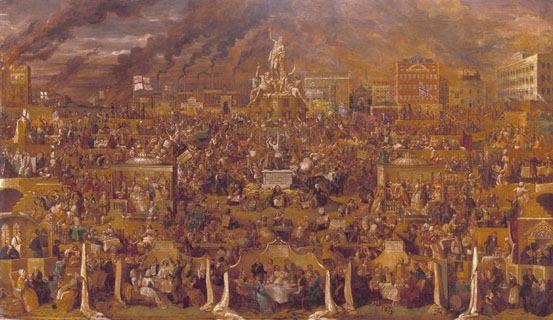After more than a hundred years of neglect George Cruikshank’s panoramic depiction of a crazed and drink-sodden London, The Worship of Bacchus, has emerged from the darkness of the Tate’s storerooms like some great monster surfacing from the deep. Cruikshank’s masterpiece, an all-out pictorial assault on the conscience of Victorian England, is a once-in-a-lifetime rediscovery. The Bacchus is possibly the greatest, probably the largest, and definitely the weirdest hitherto unknown picture in all of the national art collections. Now its resurrection is at hand, together with the long overdue rehabilitation of Cruikshank himself as the liveliest satirical artist of his time.
On 25 May, following more than a year of painstaking restoration work, the cleaned, relined, restretched, reframed and revarnished canvas – all 14,720 pullulating square inches of it – will be put on display in a special celebration of Cruikshank at Tate Britain. The timing could hardly be better. In the centenary year of Queen Victoria’s death, a work of art comes to light which utterly transforms the stock mental picture of England under her reign. Taking its rightful place beside such perennially popular nineteenth-century pictures as W.P. Frith’s Derby Day and John Martin’s careening biblical apocalypses – and itself a sort of cross between both, being a social panorama which proclaims the end of the world to be nigh – The Worship of Bacchus is a raw and ragged reproof to most stereotypical, sentimentalised views of Victorian Britain.
Cruikshank had been a graphic satirist in his youth, much influenced by the founding fathers of English caricature, James Gillray and William Hogarth. The Bacchus, which he painted near the end of his long life, when he had become a prominent campaigner in the Temperance movement, riotously extends a tradition dating back to the eighteenth...


